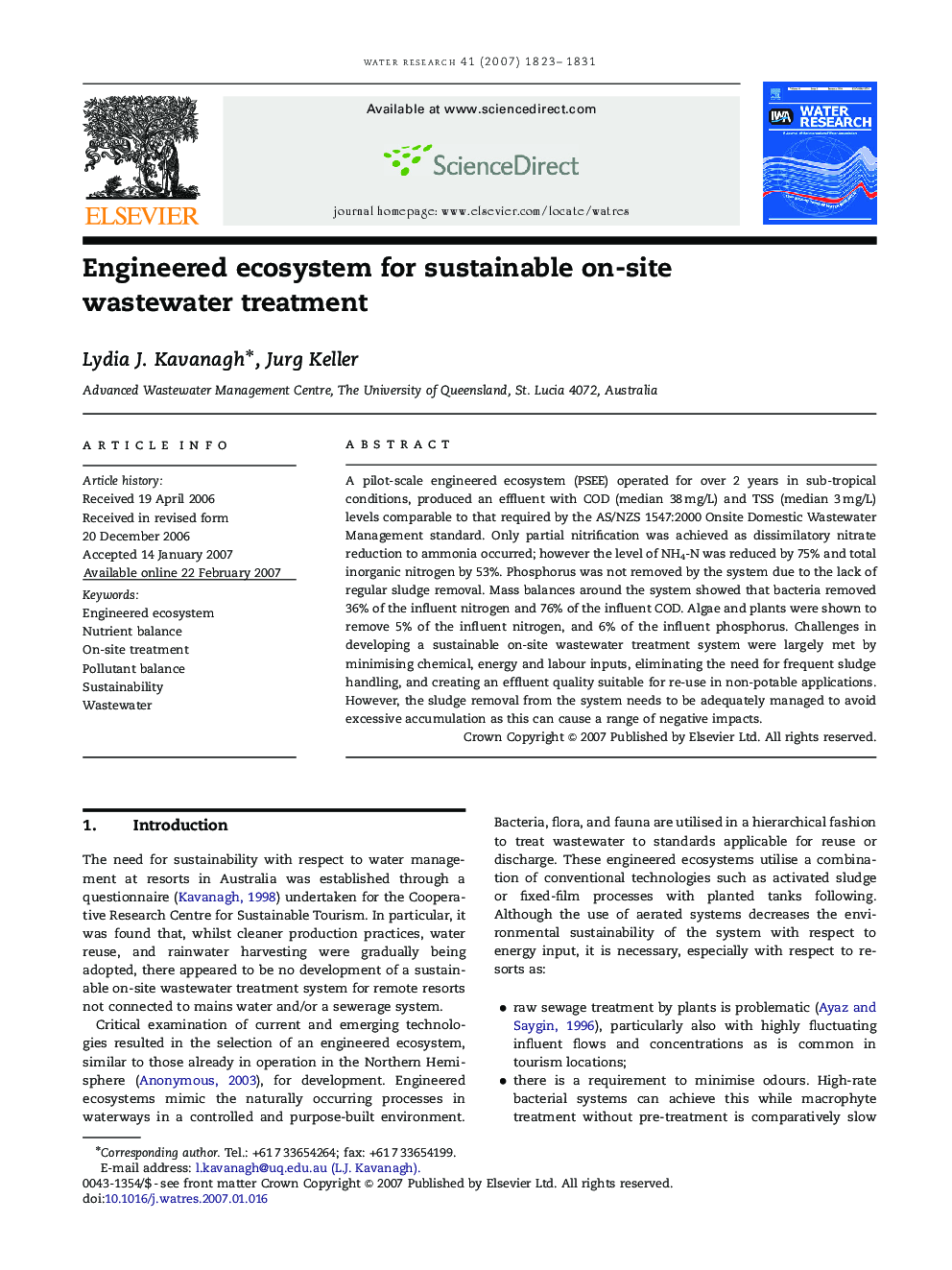| Article ID | Journal | Published Year | Pages | File Type |
|---|---|---|---|---|
| 4485327 | Water Research | 2007 | 9 Pages |
A pilot-scale engineered ecosystem (PSEE) operated for over 2 years in sub-tropical conditions, produced an effluent with COD (median 38 mg/L) and TSS (median 3 mg/L) levels comparable to that required by the AS/NZS 1547:2000 Onsite Domestic Wastewater Management standard. Only partial nitrification was achieved as dissimilatory nitrate reduction to ammonia occurred; however the level of NH4-N was reduced by 75% and total inorganic nitrogen by 53%. Phosphorus was not removed by the system due to the lack of regular sludge removal. Mass balances around the system showed that bacteria removed 36% of the influent nitrogen and 76% of the influent COD. Algae and plants were shown to remove 5% of the influent nitrogen, and 6% of the influent phosphorus. Challenges in developing a sustainable on-site wastewater treatment system were largely met by minimising chemical, energy and labour inputs, eliminating the need for frequent sludge handling, and creating an effluent quality suitable for re-use in non-potable applications. However, the sludge removal from the system needs to be adequately managed to avoid excessive accumulation as this can cause a range of negative impacts.
